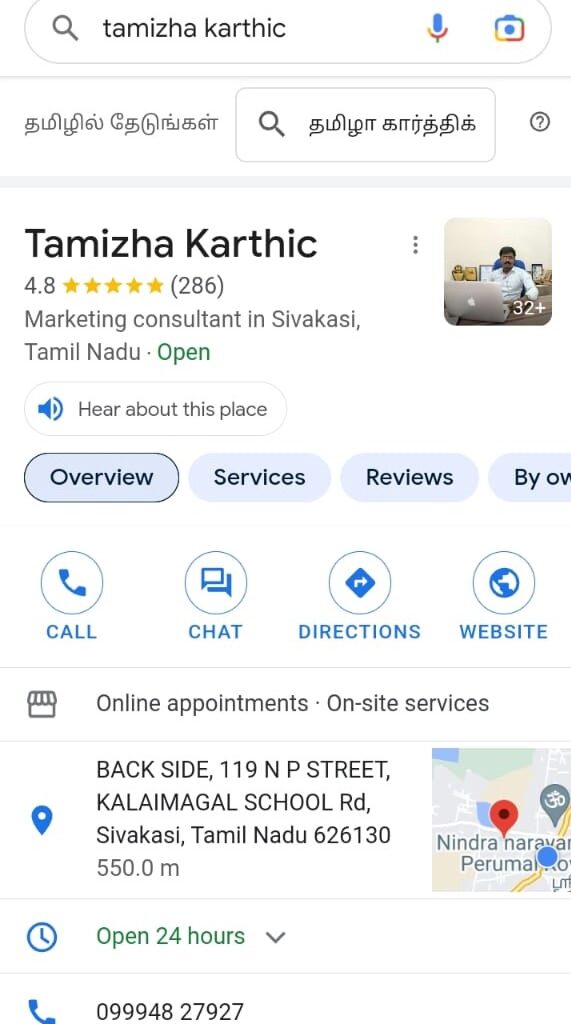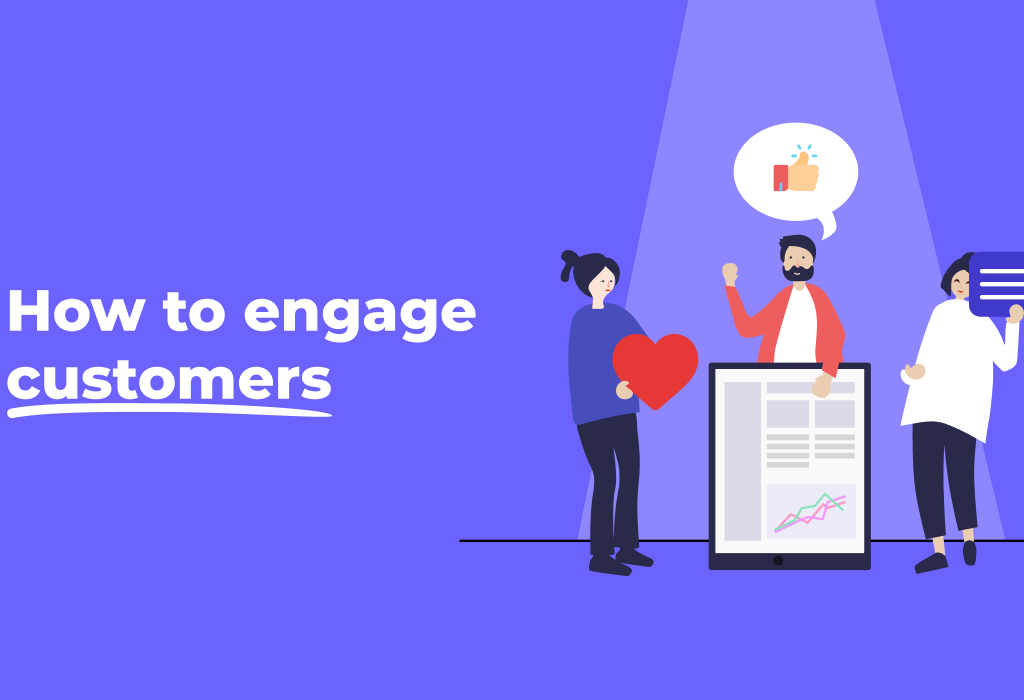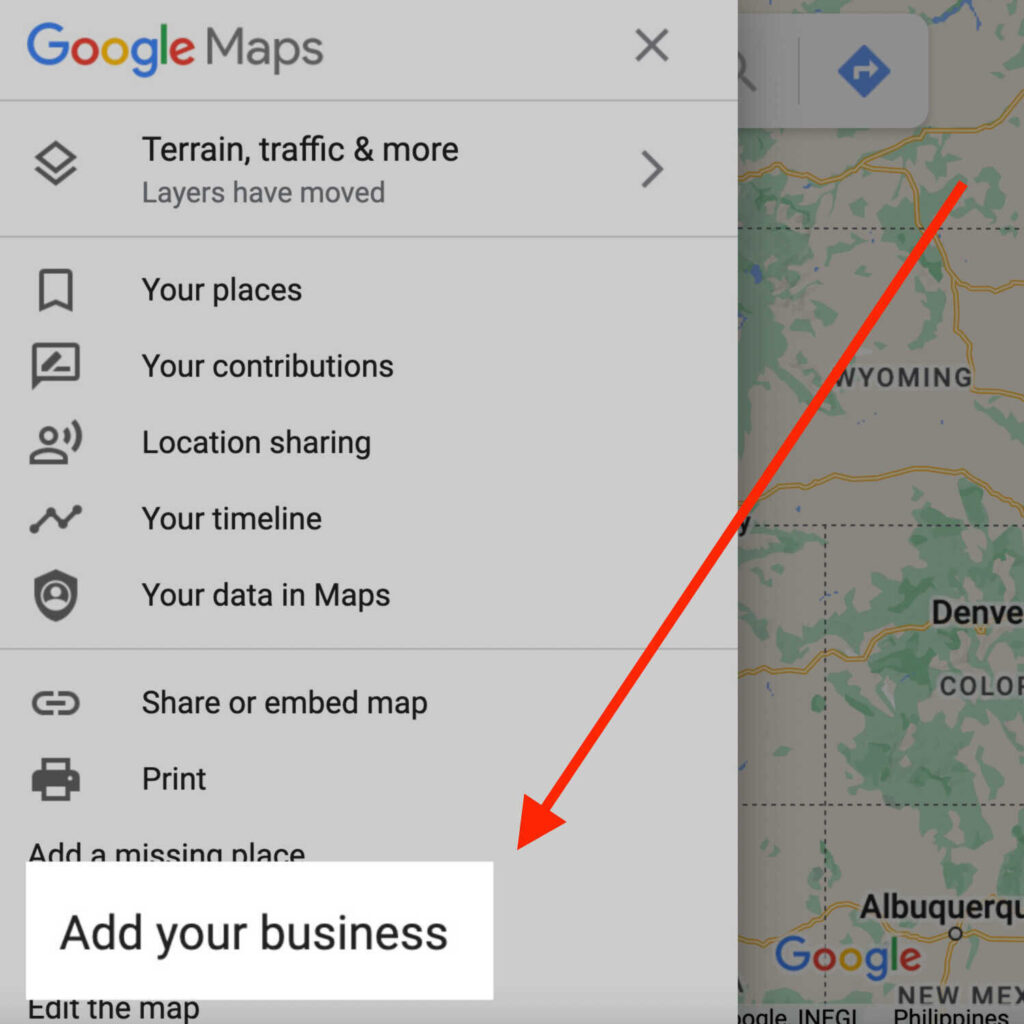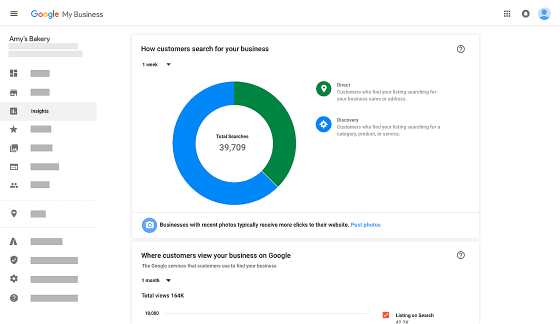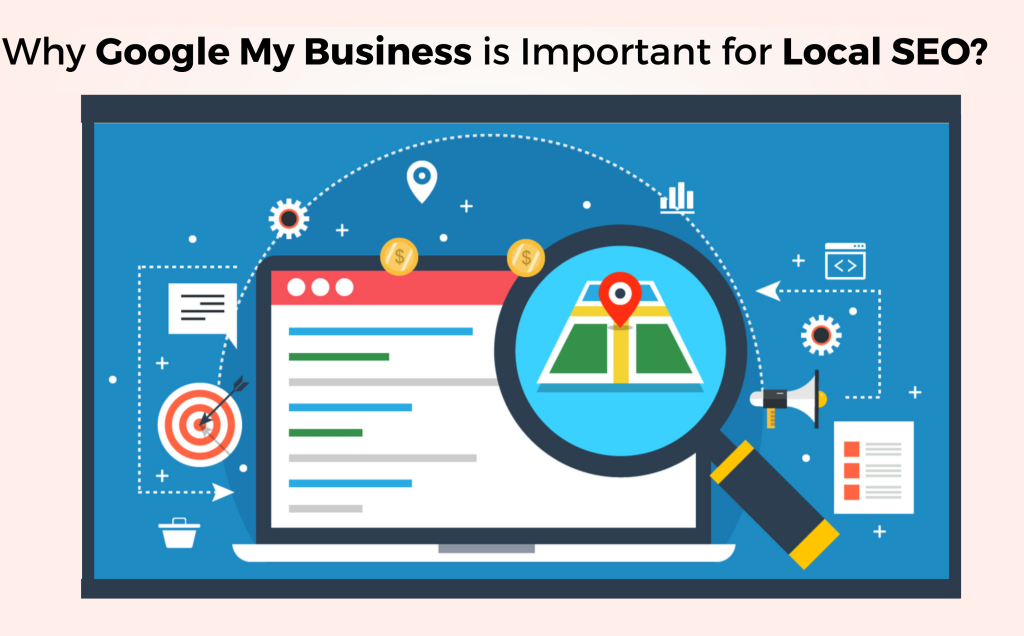Table of Contents
The courses we offer
- Digital Marketing Strategies
- Social Media Marketing
- SEO and content marketing
- Email Marketing
- Business Automation Tools
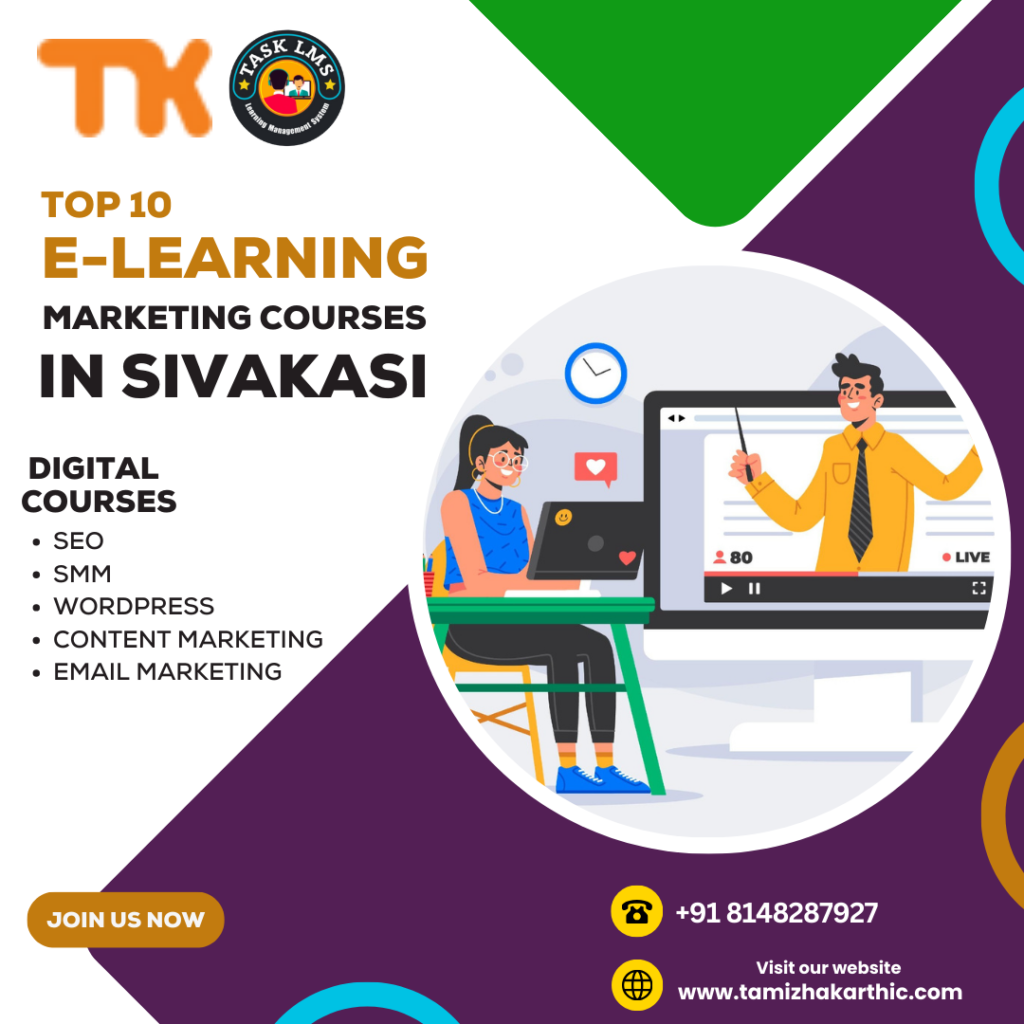
Introduction
In the digital age, where education is no longer confined to traditional classrooms, the role of effective marketing in the e-learning sector has become paramount. Sivakasi, a vibrant town in Tamil Nadu, is witnessing a surge in demand for e-learning, opening up exciting opportunities for marketing professionals. In this article, we’ll explore the top 5 e-learning marketing courses curated by Tamizha Karthic, providing invaluable insights into the dynamic world of digital education.
e-learning marketing courses in sivakasi
As the educational landscape undergoes a paradigm shift towards online learning, the need for skilled marketing professionals in Sivakasi has never been more pronounced. E-learning platforms are not only reshaping the way knowledge is disseminated but also creating new avenues for marketing experts to showcase their prowess.
The Rise of E-Learning in Sivakasi
The town of Sivakasi, renowned for its vibrant industries, is undergoing a transformative shift as it eagerly adopts e-learning on a massive scale. This burgeoning trend is propelled by a growing student population that is increasingly seeking high-quality education beyond the constraints of traditional boundaries. As a result, e-learning platforms are rapidly gaining traction, offering a dynamic and flexible approach to learning.
This paradigm shift in the education landscape not only meets the evolving needs of students but also presents an exceptional opportunity for marketers to establish a distinctive presence in a sector ripe for innovation. The demand for digital education solutions is creating fertile ground for creative marketing strategies, enabling brands to connect with the aspirations and preferences of the tech-savvy student demographic.
In this era of digital transformation, the traditional educational landscape is being reshaped, and Sivakasi stands at the forefront of this revolution. Marketers can capitalize on this trend by tailoring their approaches to align with the preferences of the local student population. From targeted online campaigns to partnerships with e-learning platforms, there are myriad avenues for marketers to explore, ensuring they play a pivotal role in the ongoing educational evolution in Sivakasi.
As e-learning continues to gain momentum, marketers have the opportunity to not only showcase the benefits of their products and services but also to contribute to the overall enhancement of the educational experience in Sivakasi. By staying attuned to the unique needs and aspirations of the local community, marketers can forge meaningful connections that go beyond mere transactions, establishing themselves as valuable contributors to the educational landscape of this dynamic town.
Why Marketing Courses Matter
In the e-learning industry, marketing is far from a one-size-fits-all endeavor. Navigating the nuances of promoting educational content effectively requires specialized knowledge and a keen understanding of the diverse needs of learners. The impact of marketing on the success of e-learning ventures cannot be overstated, making it imperative for professionals in this field to acquire the right skills.
The dynamic nature of the e-learning landscape demands a nuanced approach to marketing. Unlike traditional education, where physical presence often played a significant role, e-learning relies heavily on digital platforms and virtual spaces. Marketers need to grasp the intricacies of online promotion, user engagement, and the unique value propositions offered by different e-learning solutions.
Furthermore, understanding the diverse demographics and learning preferences of the target audience is crucial. Tailoring marketing strategies to resonate with the specific needs of students, professionals, or lifelong learners is essential for capturing their attention and fostering engagement. This might involve employing targeted advertising, utilizing social media channels, or even collaborating with influencers who can effectively communicate the benefits of e-learning.
Moreover, given the rapid evolution of technology and educational trends, staying abreast of the latest developments is paramount for e-learning marketers. This includes being familiar with emerging technologies such as virtual reality, gamification, and adaptive learning systems. Keeping pace with these advancements ensures that marketing efforts align with the cutting-edge features and innovations that define the e-learning landscape.
E-learning marketing courses in sivakasi
Sivakasi’s burgeoning interest in e-learning is met with a comprehensive array of specialized marketing courses designed to empower professionals to effectively promote educational content. These courses cater to the unique demands of the digital era and offer valuable insights into various aspects of e-learning marketing. Here is an overview of the distinctive courses available:
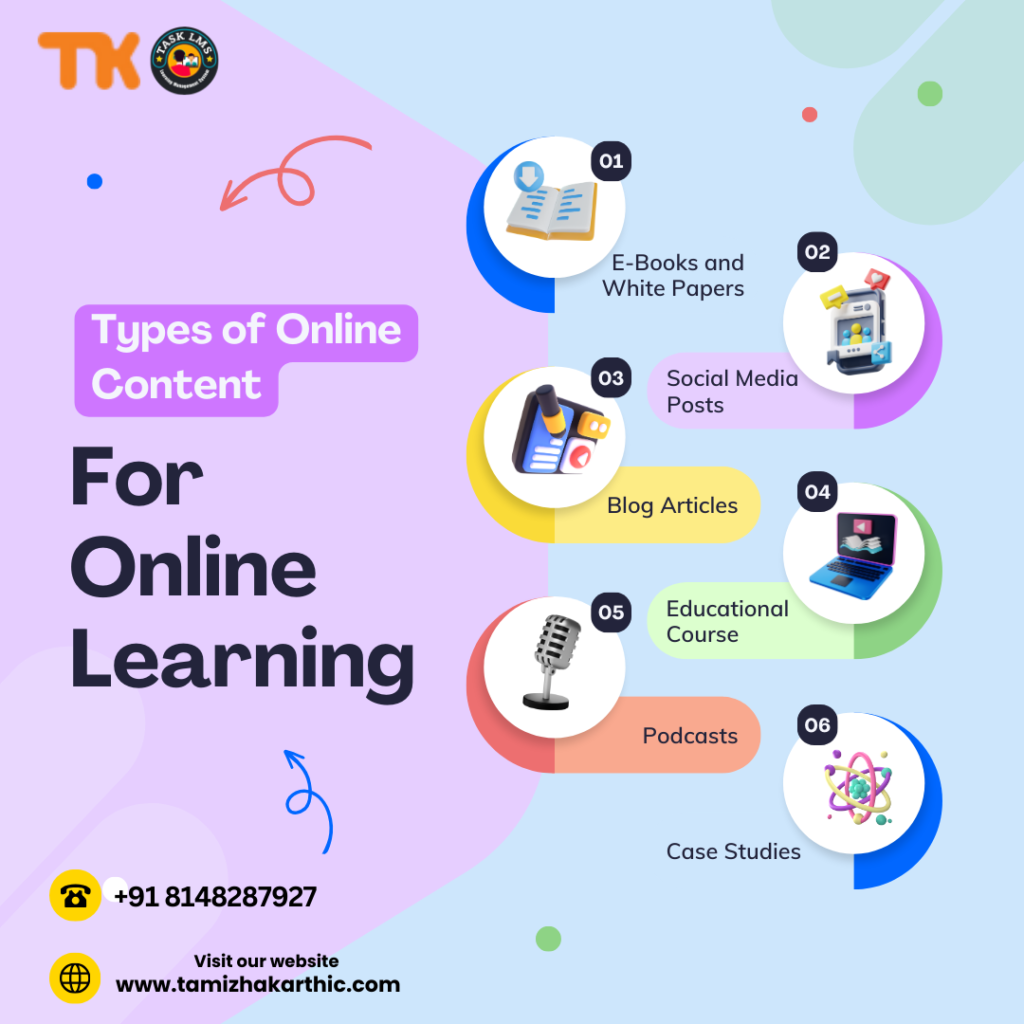
Digital Marketing Strategies
Digital marketing serves as the linchpin for promoting e-learning content. This course delves into the intricacies of digital strategies, encompassing social media promotion, paid advertising, and content optimization. Participants gain a comprehensive understanding of the tools and techniques essential for maximizing the reach of e-learning initiatives.
Social Media Marketing
Recognizing the transformative power of social media in building communities, this course is tailored specifically for the education sector. Participants explore effective social media tactics, learning how to leverage platforms to connect, engage, and create impactful communities around e-learning content.
SEO and Content Marketing
Visibility in the expansive digital landscape is crucial for the success of e-learning ventures. This course focuses on search engine optimization (SEO) and content marketing, providing marketers with the skills to optimize content and enhance search engine rankings. Participants learn strategies to ensure that their e-learning offerings stand out in the online realm.
Email Marketing
Despite the evolution of communication channels, email remains a potent tool. This course concentrates on leveraging email marketing to establish meaningful connections with students, educators, and stakeholders. Participants gain insights into crafting effective email campaigns that resonate with the e-learning audience.
Business automation tools are software applications designed to simplify and streamline various tasks within a company. These tools automate repetitive processes, saving time and reducing manual effort. Some common examples include:
WordPress :
Harnessing the Potential of WordPress for Seamless Web Development
In today’s digital era, establishing a robust online presence is paramount for businesses and individuals alike. WordPress, a versatile content management system, stands as a beacon for those seeking user-friendly web development solutions.
Understanding the Essence of WordPress
WordPress, with its intuitive interface and extensive plugin ecosystem, has become the go-to platform for building websites. Whether you’re a blogger, entrepreneur, or corporate entity, this powerhouse offers a customizable and scalable foundation for your digital ventures.
Navigating the WordPress Landscape: A User-Friendly Experience
The Simplicity of WordPress Installation
Setting up your online domain is no longer a daunting task. With WordPress, the installation process is a breeze. Even those with limited technical expertise can seamlessly navigate through the steps, ensuring a quick and efficient setup.
Themes: Crafting a Visually Stunning Website
One of the hallmark features of WordPress is its array of captivating themes. From minimalist designs to bold and vibrant layouts, choose a theme that aligns with your brand identity. Impress your visitors with a visually stunning website that leaves a lasting impression.
Business Automation Tools
CRM Systems:
Purpose: Manage customer interactions and relationships in one central system.
Examples: Salesforce, HubSpot.
Workflow Automation:
Purpose: Automate routine tasks and processes to improve efficiency.
Examples: Zapier, Microsoft Power Automate.
Document Management Systems:
Purpose: Organize and streamline document creation, storage, and sharing.
Examples: SharePoint, Google Workspace.
Email Marketing:
Purpose: Automate email campaigns and communication.
Examples: Mailchimp, Constant Contact.
Chatbots:
Purpose: Automate customer support and engagement through chat.
Examples: Chatfuel, Dialogflow.
Financial Tools:
Purpose: Automate financial tasks such as invoicing and expense management.
Examples: QuickBooks, Xero.
HR Management:
Purpose: Streamline human resources processes like payroll and onboarding.
Examples: BambooHR, ADP.
These tools simplify day-to-day operations, enhance collaboration, and contribute to overall business efficiency.
Benefits of Each Course
Digital Marketing Strategies
This course provides a comprehensive understanding of digital marketing strategies tailored specifically for the e-learning industry. Topics covered include social media promotion, paid advertising, and optimizing content for maximum reach.
Participants will learn how to navigate the digital landscape, develop effective online campaigns, and leverage various channels to promote e-learning content successfully.
B. Advantages of Social Media Marketing
This course explores the transformative power of social media in the context of the education sector. Participants will gain insights into crafting effective social media tactics that can connect, engage, and build communities around e-learning content.
Advantages include the ability to create a strong online presence, foster meaningful interactions, and harness the viral potential of social media platforms.
C. SEO and content strategies
The course focuses on the pivotal role of search engine optimization (SEO) and content marketing in the visibility of e-learning content. Participants will acquire skills to optimize content effectively, improve search engine rankings, and ensure that e-learning offerings stand out in the competitive digital landscape.
The course enhances the understanding of how SEO and content strategies work hand-in-hand to attract and engage the target audience.
D. Importance of email marketing skills
This course underscores the enduring potency of email marketing as a communication tool. Participants will learn to leverage email campaigns to reach students, educators, and stakeholders, fostering meaningful connections.
The importance lies in the ability to craft compelling and targeted email messages that resonate with the e-learning audience, establishing effective communication channels.
E-Business Automation Tools
Enrolling in a business automation tools course can provide a range of benefits, equipping individuals with valuable skills and knowledge to navigate the complexities of modern business operations. Here are some key benefits of such a course
Increased Efficiency:
Participants learn to automate repetitive and time-consuming tasks, leading to increased operational efficiency. This can result in significant time savings and a more streamlined workflow.
Cost Savings
Automation helps reduce manual labor, which can lead to cost savings for businesses. Participants in the course gain insights into optimizing processes to achieve maximum efficiency at minimal cost.
Enhanced Productivity:
With the automation of routine tasks, employees can focus on more strategic and creative aspects of their work. This contributes to enhanced overall productivity and job satisfaction.
Success stories
Sara’s Digital Marketing Transformation:
Sara enrolled in the “Digital Marketing Strategies for E-Learning” course and applied the skills learned to promote online courses for a local educational institution. The institution saw a 30% increase in student enrollments, attributing the success to Sara’s targeted digital marketing campaigns.
Mark’s Social Media Mastery:
Mark, a professional in the education sector, undertook the “Social Media Marketing in the Education Sector” course. Applying the strategies learned, he created engaging social media content for his institution, leading to a significant boost in online engagement and student participation.
SEO Success for Alex’s E-Learning Startup:
Alex, an entrepreneur in the e-learning industry, took the “SEO and Content Marketing for E-Learning” course. Implementing the SEO strategies learned, his startup’s online visibility increased, resulting in a higher conversion rate and expanded reach among the target audience.
Email Marketing Impact for Emily’s Educational Blog:
Emily, an educator with a passion for writing, enrolled in the “Email Marketing for Education” course. Applying email marketing techniques, she grew her educational blog’s subscriber base by 50%, fostering a community of engaged readers and expanding her influence in the education sector.
Tips for Choosing the Right Course:
Self-Reflection:
Before selecting a course, take time to reflect on your strengths, skills, and areas where you want to improve. Identify the specific goals you aim to achieve through the course.
Career Objectives:
Align the course with your career objectives. Consider how the skills gained will contribute to your professional growth and whether they complement your long-term career goals.
Learning Style:
Assess your preferred learning style, whether it’s hands-on practical experience, interactive discussions, or self-paced study. Choose a course format that resonates with your learning preferences.
Skill Gap Analysis:
Identify any skill gaps you currently have and choose a course that directly addresses those gaps. This ensures that you acquire practical skills that are immediately applicable to your work or future endeavors.
Interest and Passion:
Opt for a course that aligns with your interests and passions. Learning is more effective and enjoyable when you are genuinely interested in the subject matter.
Time Commitment:
Evaluate the time commitment required for the course. Consider your current work or study schedule and choose a course that fits comfortably within your available time without causing undue stress.
Overcoming Challenges in E-Learning Marketing
Saturation in the Market:
E-learning markets can become saturated, making it challenging for marketing professionals to distinguish their offerings amidst competition.
Technological Barriers:
The rapid evolution of technology can pose challenges for marketing professionals, who must continually adapt to new platforms and tools to effectively reach their target audience.
Engagement and Retention:
Capturing and maintaining the attention of learners in the digital space can be difficult, as distractions are abundant and attention spans may be limited.
Content Overload:
The abundance of online content can lead to information overload, making it challenging for marketing professionals to create content that stands out and resonates with the audience.
Budget Constraints:
Limited marketing budgets can constrain efforts to implement comprehensive campaigns, hindering the ability to reach a broader audience effectively.
Data Privacy Concerns:
Increasing concerns about data privacy may impact the ability to gather and utilize user data for targeted marketing efforts.
Register now: https://visit.onepagesite.in/Digital_Marketing_Course
Conclusion
In conclusion, the e-learning landscape in Sivakasi offers promising opportunities for individuals stepping into the realm of digital marketing. The courses crafted by Tamizha Karthic not only impart crucial skills but also unlock a realm of possibilities. Aspiring marketing professionals in Sivakasi are encouraged to embrace these opportunities, playing a pivotal role in the educational evolution through the implementation of effective marketing strategies. The intersection of education and technology in Sivakasi presents a dynamic space for innovation, growth, and the shaping of a more accessible and impactful learning experience.
FAQ
Are these courses suitable for beginners in marketing?
Absolutely! The courses cater to all skill levels, providing a solid foundation for beginners.
What distinguishes these courses from generic marketing programs?
Tailored for e-learning, these courses offer specialized insights and strategies for effective digital education promotion.
Can I enroll in multiple courses simultaneously?
Yes, you can. The courses are designed to complement each other, enhancing your overall marketing proficiency.
Are there any prerequisites for these courses?
While some familiarity with digital marketing is beneficial, the courses are structured to accommodate learners with varying levels of expertise.
How do these courses contribute to career growth in the e-learning industry?
The courses provide practical skills and knowledge, empowering you to excel in marketing roles within the thriving e-learning sector.

